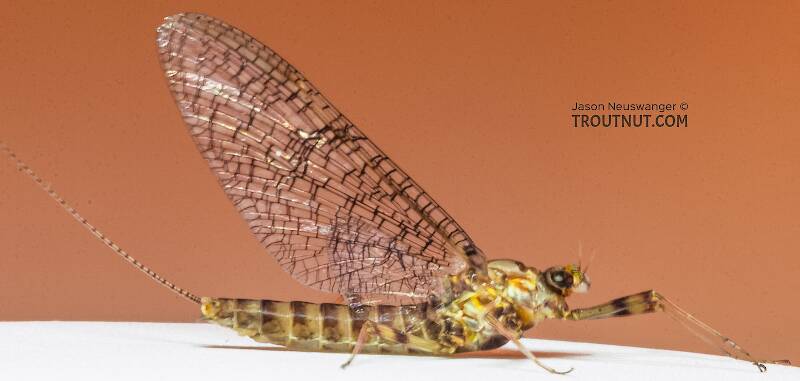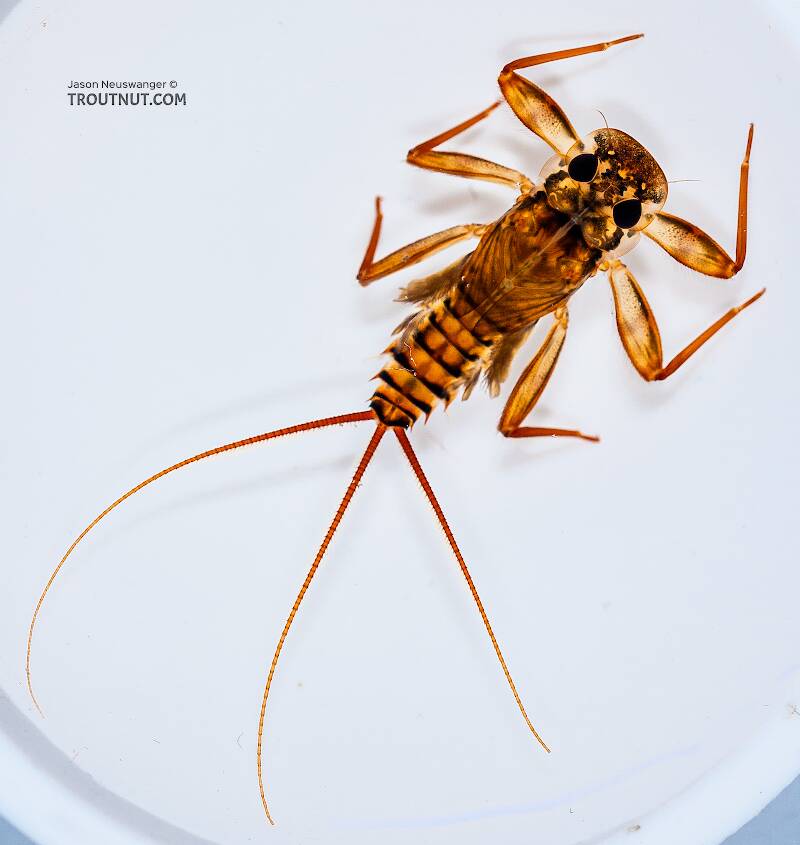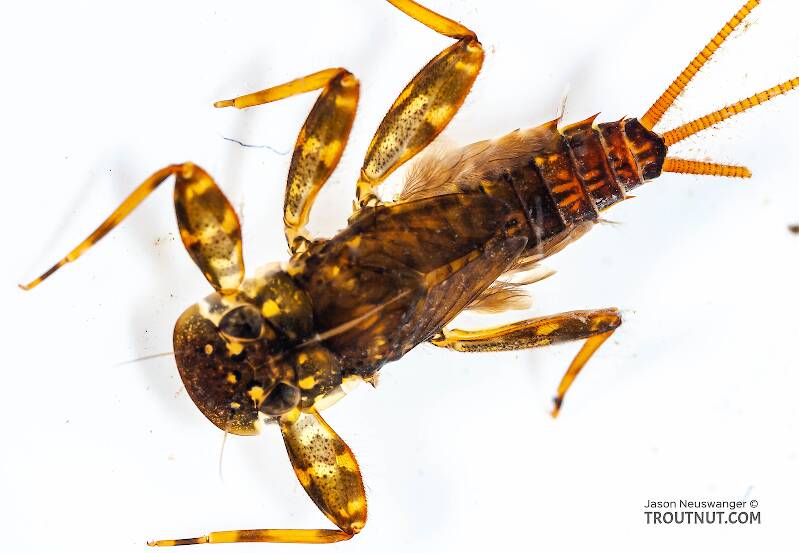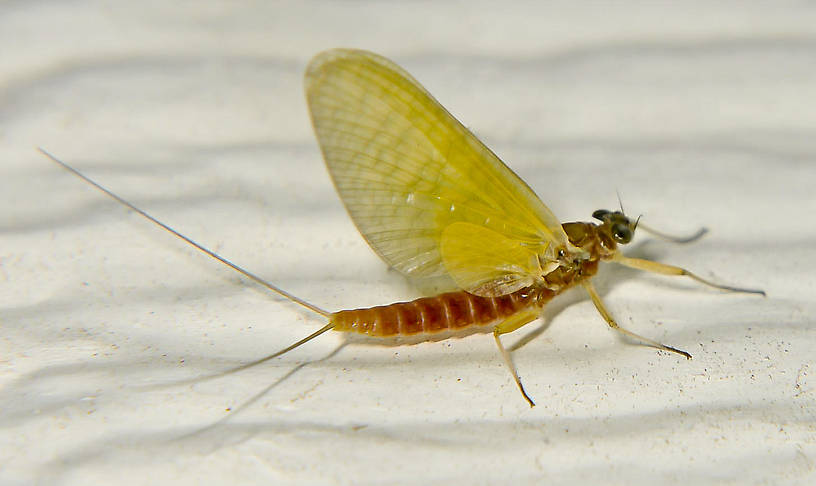
Salmonflies
Pteronarcys californica
The giant Salmonflies of the Western mountains are legendary for their proclivity to elicit consistent dry-fly action and ferocious strikes.
Featured on the forum

This one seems to tentatively key to Holocentropus, although I can't make out the anal spines in Couplet 7 of the Key to Genera of Polycentropodidae Larvae nor the dark bands in Couplet 4 of the Key to Genera of Polycentropodidae Larvae, making me wonder if I went wrong somewhere in keying it out. I don't see where that could have happened, though. It might also be that it's a very immature larva and doesn't possess all the identifying characteristics in the key yet. If Holocentropus is correct, then Holocentropus flavus and Holocentropus interruptus are the two likely possibilities based on range, but I was not able to find a description of their larvae.

Troutnut is a project started in 2003 by salmonid ecologist Jason "Troutnut" Neuswanger to help anglers and
fly tyers unabashedly embrace the entomological side of the sport. Learn more about Troutnut or
support the project for an enhanced experience here.
Dark Cahills
Like most common names,"Dark Cahill" can refer to more than one taxon. They're previewed below, along with 9 specimens. For more detail click through to the scientific names.
Mayfly Species Stenonema ithaca
These are sometimes called Dark Cahills.
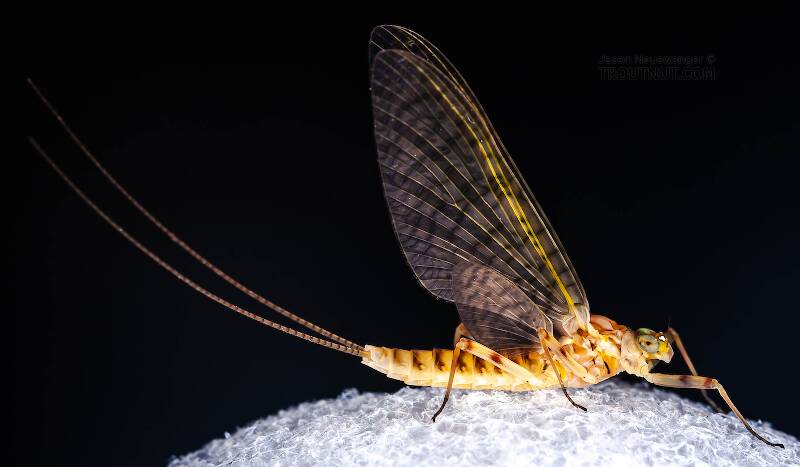
This female looks very much like a male I collected a few hundred miles away a few days later, so I'm guessing it's the same species, which I believe is Maccaffertium mediopunctatum.
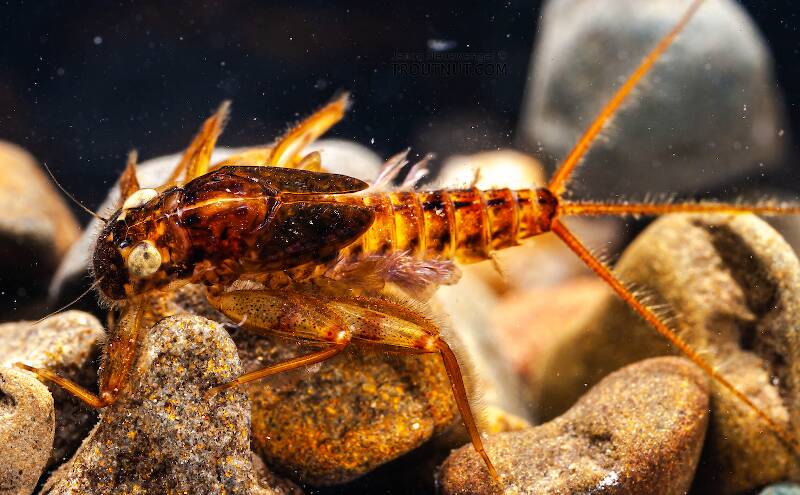
This specimen seems to be of the same species as a dun I photographed which emerged from another nymph in the same sample.
See 2 more specimens...
Mayfly Species Stenonema vicarium
These are sometimes called Dark Cahills.
In the East and Midwest this is one of the most important hatches of the Spring. They are large flies which emerge sporadically, making for long days of good fishing.
This species contains the two classic Eastern hatches formerly known as Stenonema vicarium and Stenonema fuscum, the "March Brown" and "Gray Fox." Entomologists have discovered that these mayflies belong to the same species, but they still display differences in appearance which the trout notice easily. Anglers should be prepared to imitate both types.
This species contains the two classic Eastern hatches formerly known as Stenonema vicarium and Stenonema fuscum, the "March Brown" and "Gray Fox." Entomologists have discovered that these mayflies belong to the same species, but they still display differences in appearance which the trout notice easily. Anglers should be prepared to imitate both types.
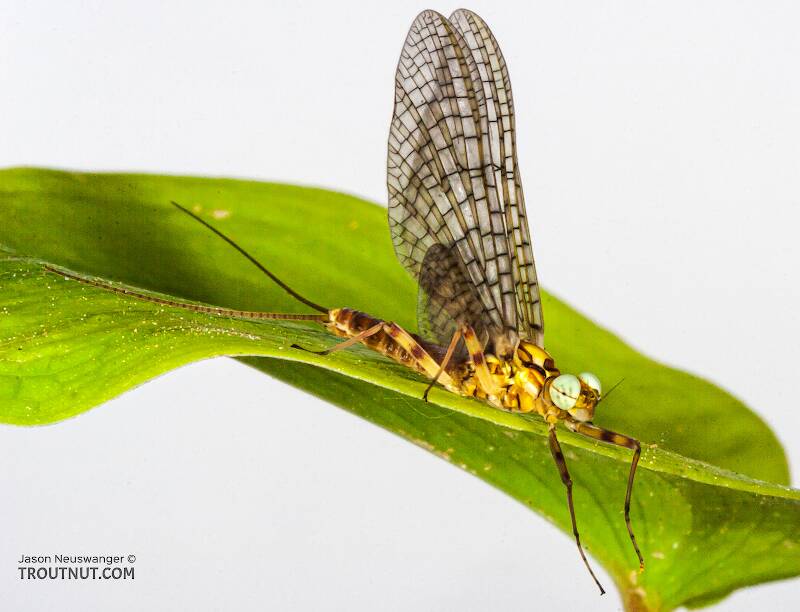
I collected this mayfly on the same trip as a female of the same species. After these photos it molted into a spinner. This is the form of Stenonema vicarium which anglers call the "Gray Fox."
See 17 more specimens...
Mayfly Species Stenonema femoratum
These are very rarely called Dark Cahills.
This species is only one of many minor Light Cahills and the only species remaining in the Stenonema genus after the classic superhatches were reclassified into Maccaffertium and Stenacron. Its habitat and behavior is not different from those species, except as noted below, and you should consult the pages for those genera if you need angling information for this hatch.
Mayfly Species Cinygmula reticulata
These are very rarely called Dark Cahills.
Cinygmula reticulata is probably the second most important species of Cinygmula behind Cinygmula ramaleyi, perhaps because the waters where it can be found in good numbers are often more remote. They have been reported as abundant in many high country streams of the Southern Rockies as well as the High Sierra's Eastern slope. An obvious difference in their coloration may be the easiest way to tell them apart. Cinygmula ramaleyi is more somber with a brownish body and dark gray wings and is often confused with the similar sized and colored Ephemerella tibialis, in spite of the difference in tail counts. Cinygmula reticulata on the other hand is a bright cinnamon dorsally with pale creamy legs and pale wings that are often a brilliant canary yellow. This is one of North America's most beautiful mayflies.
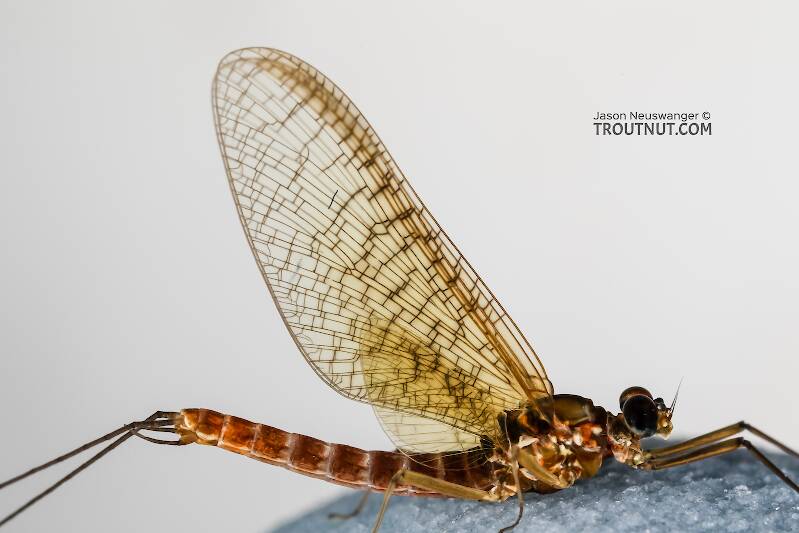
The lengths of the wing and body, measured with a caliper, are both 8 mm.
Keys in Needham's 1935 Biology of Mayflies point to either Cinygmula reticulata or Cinygmula gartrelli. It seems to have crossveins in costal half of forewing only, slightly margined with brown and wings tinged with amber at base and along costal margin of both wing (gartrelli) as opposed to all crossveins of both wings faintly but broadly margined with pale smoky and wings entirely amber-tinged (although there is a slight amber tinge throughout, just more pronounced in places) as in reticulata. However, wing length reported for reticulata (9 mm) is closer to this specimen than gartrelli (10 mm). Ventral median marks are supposed to be "traces" for reticulata and "present" for gartrelli. Descriptions for both species involve semi-hyaline anterior abdominal segments not present on my specimens. Distribution records suggest reticulata lives nearby, so I'm going with that, but I can't confidently rule out gartrelli.
Keys in Needham's 1935 Biology of Mayflies point to either Cinygmula reticulata or Cinygmula gartrelli. It seems to have crossveins in costal half of forewing only, slightly margined with brown and wings tinged with amber at base and along costal margin of both wing (gartrelli) as opposed to all crossveins of both wings faintly but broadly margined with pale smoky and wings entirely amber-tinged (although there is a slight amber tinge throughout, just more pronounced in places) as in reticulata. However, wing length reported for reticulata (9 mm) is closer to this specimen than gartrelli (10 mm). Ventral median marks are supposed to be "traces" for reticulata and "present" for gartrelli. Descriptions for both species involve semi-hyaline anterior abdominal segments not present on my specimens. Distribution records suggest reticulata lives nearby, so I'm going with that, but I can't confidently rule out gartrelli.
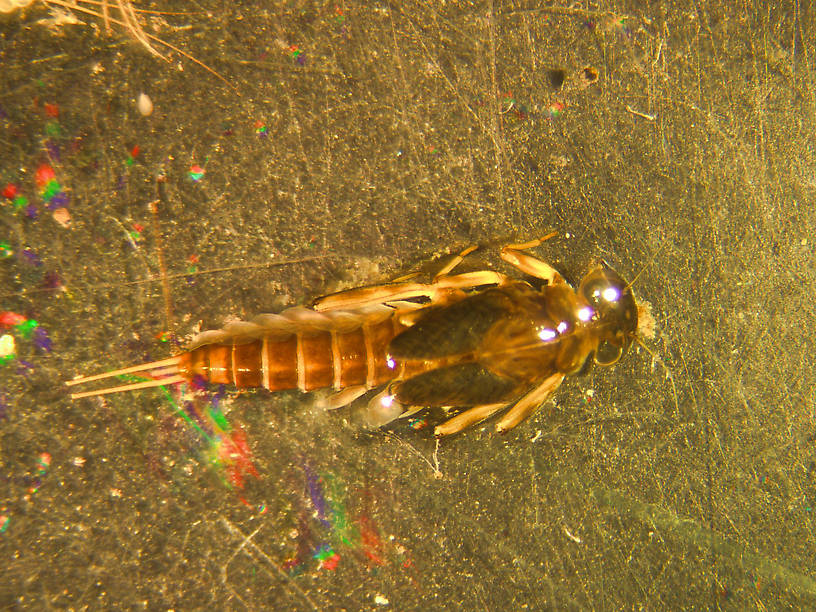
I collected several live specimens of nymphs and reared them to the imago stage. They were C. reticulata. The interesting thing is they were collected in May and were emerging along with Rhithrogena (March Brown). This seems to be an overlooked hatch since in some rivers it emerges very early, before runoff.


